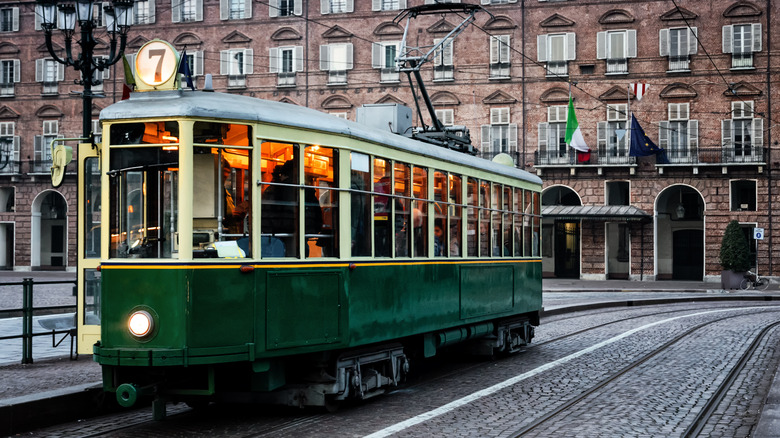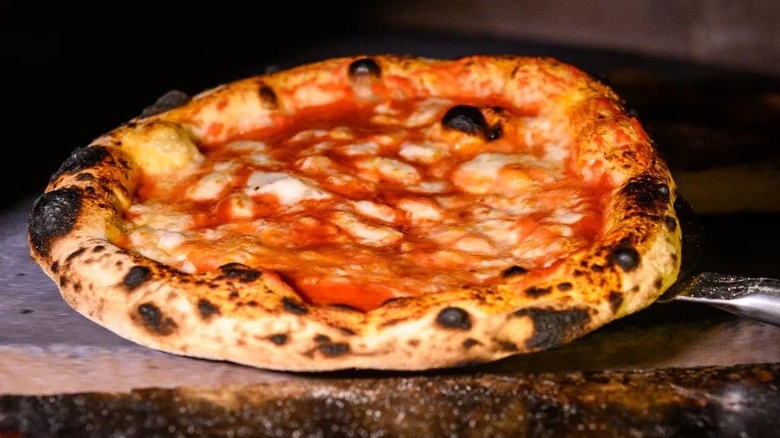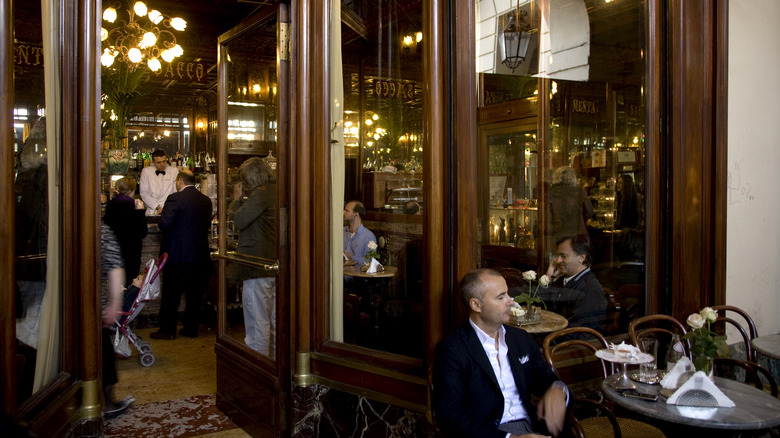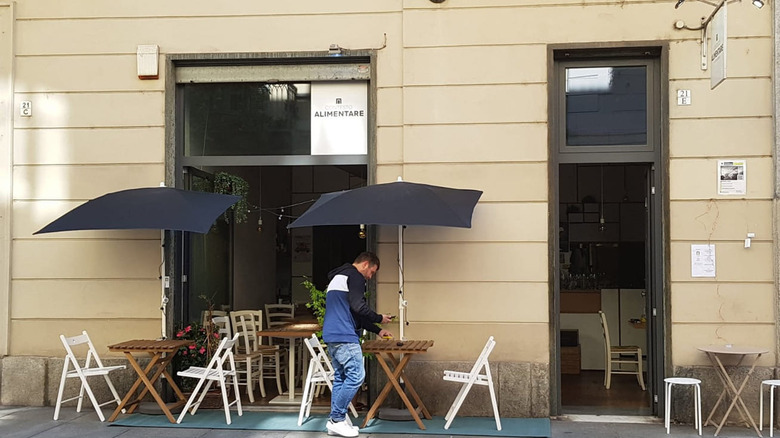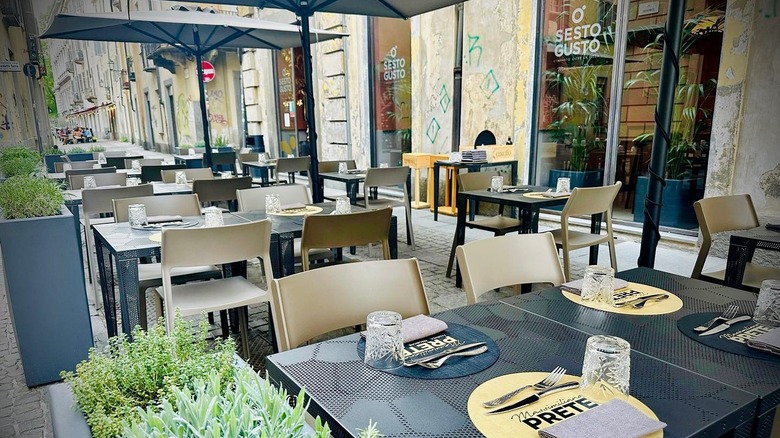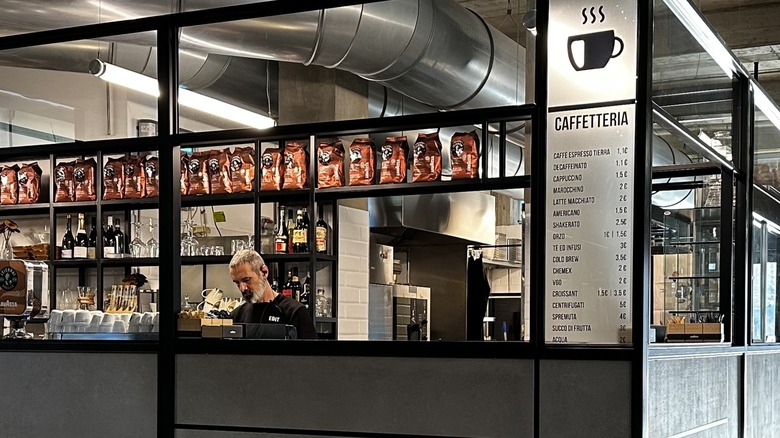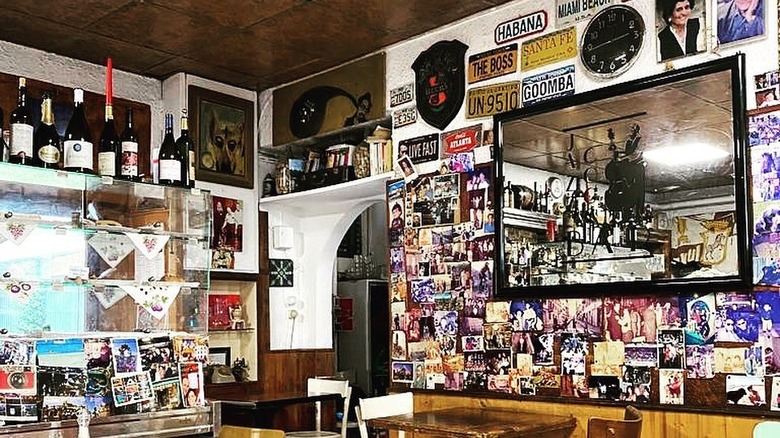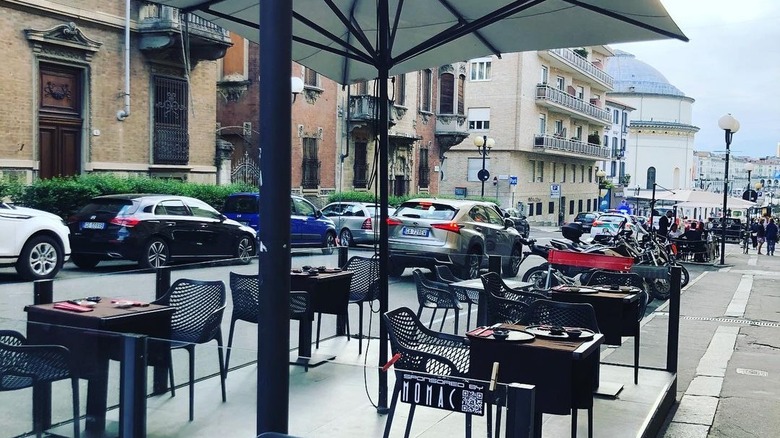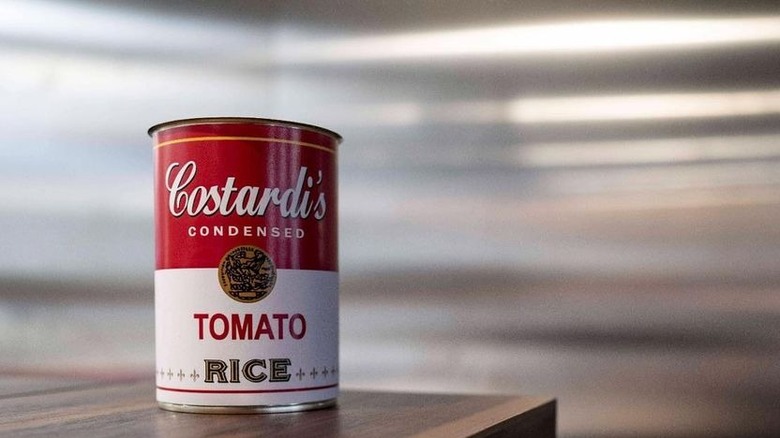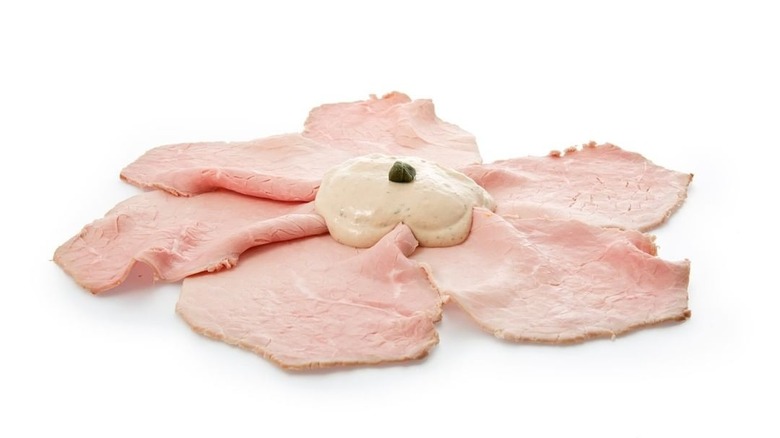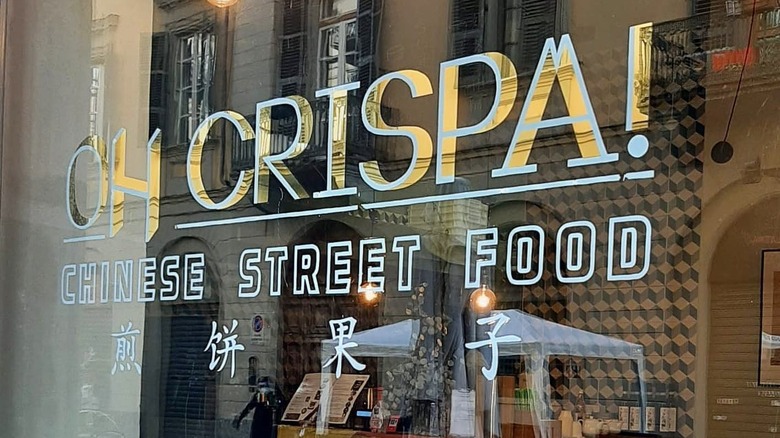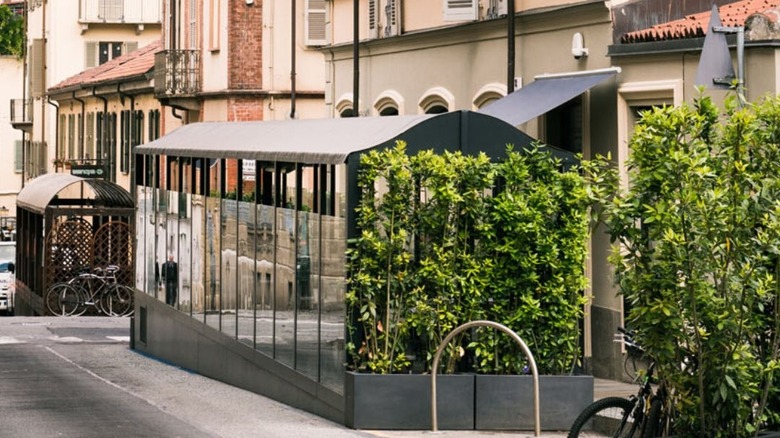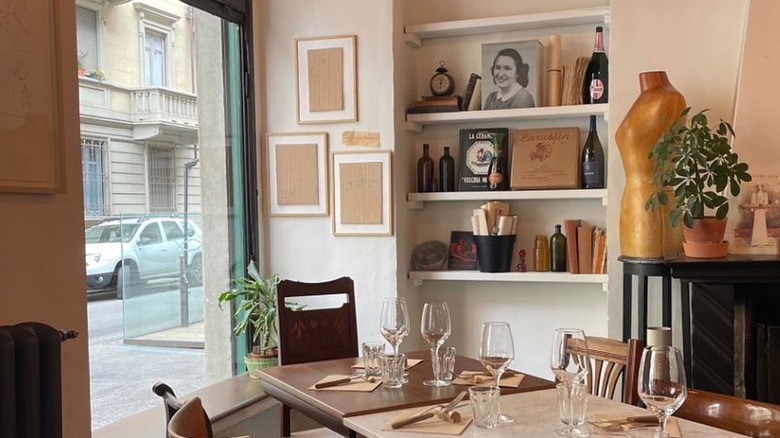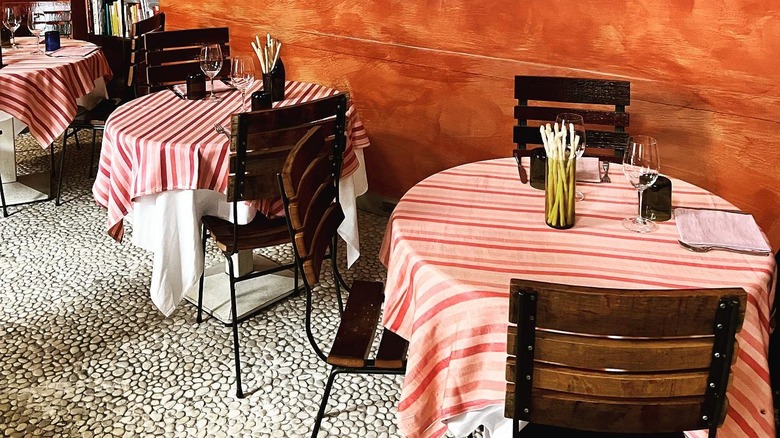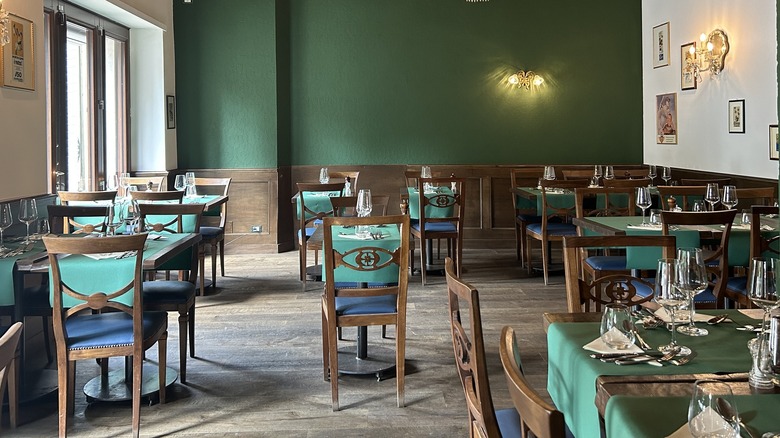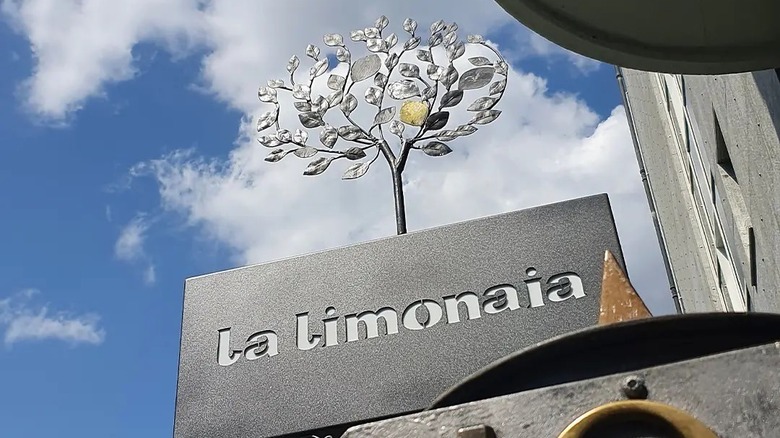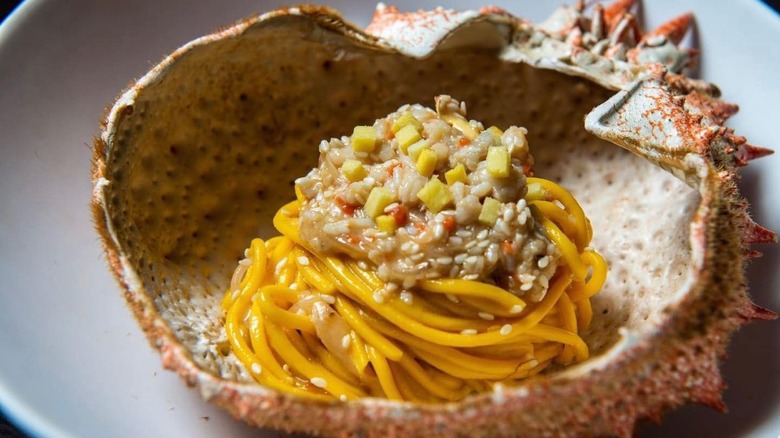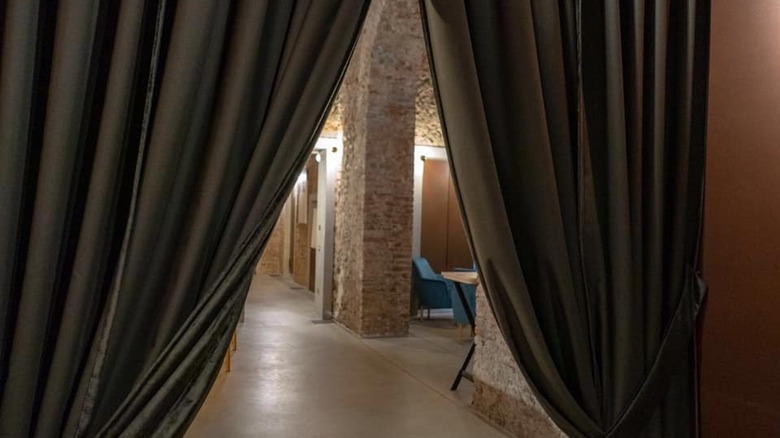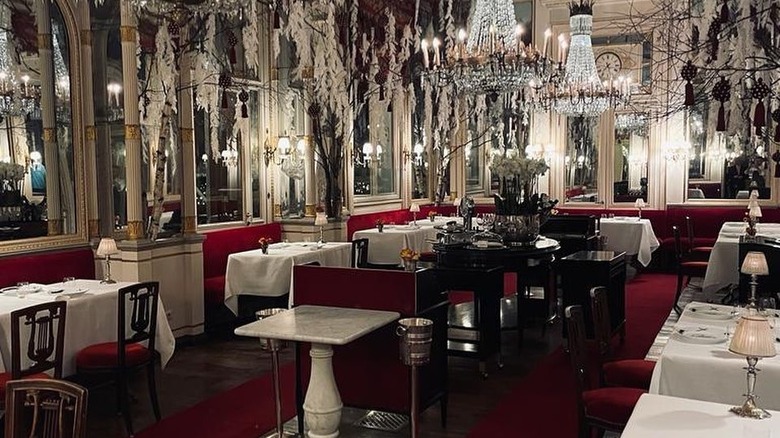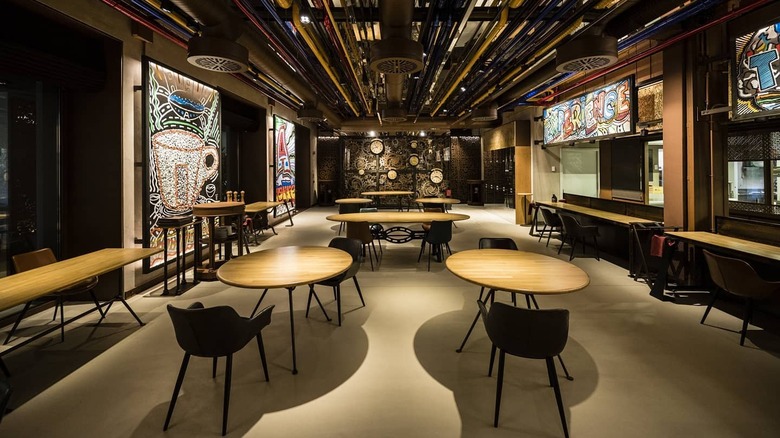20 Absolute Best Restaurants In Turin
Although any Italian city can claim high marks in terms of foodie power, Turin — known as the Paris on the Po for its Haussman-like wide boulevards flanked by impressive buildings — is especially well placed for the honor. For one, it is the birthplace of Eataly, a venture started in 2002 by Italian businessman Oscar Farinetti with the aim of bringing together some of Italy's disparate cuisines and ingredients all in one place, all while focusing on sustainability and biodiversity. This was fitting, since Turin had also developed as an important center for the Slow Food Movement, a backlash that took shape as a direct response to the opening of the first McDonald's in Italy in 1986, saving us all from culinary perdition. You can't throw a stone in Turin without hitting a restaurant that serves good, sustainably sourced food at affordable prices. Let's have a look at the best ones.
Gustotram and Ristocolor
Gustotram and Ristocolor are two vintage trams that have been converted into dining cars that serve dinner, Sunday lunch, or an aperitif while traveling around Turin and hitting some of the top tourism highlights. The "Pop" menu, which is served at the earlier dinner seating and lasts 70 minutes, may include a locally sourced salsiccia di Bra, while the "gourmet" dinner, with a seating at 9 p.m., may serve up a ragu millefoglie made with 100% local Piedmontese beef.
But don't let the food distract you from your surroundings. Turin is chock-full of beautiful historical buildings, including Palazzo Madama, the location of the first senate created upon the birth of the Italian nation in 1861, located in the city's main square, Piazza Castello.
Lo Staglio
When a pizza restaurant uses such good ingredients as Lo Staglio, you'll want to get the simplest pie possible. That way you can truly taste the quality of the source material, which is just San Marzano tomatoes, fresh mozzarella, and a dash of good olive oil on top of a light and fluffy pizza crust. Order the Margherita, and you won't be disappointed.
That is not to say that Lo Staglio is short on inventive pizza toppings. "La Gialla" comes with a yellow datterini tomato sauce topped with Agerola provala cheese and speck, while the "Lo Staglio" comes with a light dusting of fresh tomato sauce topped with fresh cherry tomatoes, burrata, and prosciutto. Whichever option you go for, you will learn that it's possible to have guilty-pleasure pizza without the grease of American-style pies.
Caffè Mulassano
A ubiquitous Italian food that doesn't get a lot of attention abroad is the "tramezzino," a sandwich made with sliced white bread and stuffed with a variety of fillings. The Caffè Mulassano, located under the arches of Piazza Castello, is widely credited with having invented this genre in 1926.
Nowadays, the Caffe' remains one of the best places in Turin to sample this simple snack. Not only are the tramezzini top notch, made with a variety of inventive fillings, but the decor is downright decadent, providing a curious juxtaposition between fancy and plain, not unlike eating cucumber sandwiches in a regal team room in London. Be forewarned though: You may have to wait if you get there at peak time. The interior space is small, there is no outside seating, and there are only a handful of cafe tables inside. It's all part of the charm.
Contesto Alimentare
If you're looking for down-home, Italian cooking that tastes like it was made by someone's kindly grandmother, this is the place for that. Dishes are unpretentious but invariably made with fresh ingredients, and it shows. For example, when you order the organic Tajarin with veal ragu, you can almost taste the field where the veal lived its happy life.
To elevate your meal, start with the "stuzzico e bolle," which is a small antipasto of Tomino cheese served with a glass of bubbly. Then just ask for a good wine recommendation or peruse the wine selection. The Piemonte region around Turin is rife with heavyweight Italian reds, such as Barolo and Barbaresco, which are made with nebbiolo grapes, and Contesto Alimentare has a good many of them. You can choose from affordable wines, organic vintages, and rare bottles prepared at small, sustainable vineyards.
Sestogusto
This trendy spot is defined in part by its pizza "tasting menu," where everyone at the table can order a selection of pizzas, which are served in slices so that everyone can try a bit of everything. Don't be fooled, though — it is mainly a gimmick. Everyone at the table has to order the same pizzas, so this is not much different than having patrons order their own pie and then exchanging slices. But the pizzas are good and the toppings are creative. They also come in a variety of different styles. Head to the Via Mazzini location and order a crispy pizza made from the wheat grown at the restaurant's own farm in Sicily. The Fa Croc Ⓡ, which means "it goes crunch," uses stone-milled flour to make traditional Roman focaccias and turns them into pizzas by adding a variety of toppings, such as prosciutto and burrata.
EDIT
The burgers and beers at this slightly off-the-beaten-track brewery are worth the trek. The burgers are big, juicy American-style feasts made with local beef. There are also plenty of other elevated pub fare options, including steak tartare. But what shines brightest is the beer menu, which reads like the carefully curated wine lists you've been seeing in restaurants all over Turin.
EDIT, housed in an old electrical cable manufacturing plant, is Turin's version of post-industrial chic. Ceilings are high, floors are concrete, and decorative steel features abound. It is the largest artisanal brewery in Turin, and it exports many of its craft brews abroad. The Mia Lager also comes in a gluten-free version, while you can sample the elusive alcohol-free craft brew in the form of the Friend or Faux.
Trattoria Bar Coco's
They say that when in Rome, do as the Romans. The same is true for Turin, and since the Turinese eat lunch at Coco's, you, too, must eat there. The neighborhood diner vibe will hit you square in the face as soon as you walk into this urban trattoria, and not just because you'll hear the waiters address patrons by name. The walls are covered in personal photos: a daughter's graduation, a family beach trip, postcards from ski resorts fronted by women in bikinis and ski boots. The place may look like it was hit by a hurricane out of the 1990s, but when you get to the food part, you'll realize it was a functional hurricane. The paccheri with pistachios and zucchini sauce is creamy and fresh, and the cheese agnolotti is transformed from the mundane to the refined by the simple dusting of hazelnuts.
Miyabi
This small but diligent Japanese joint takes the restaurant business seriously, and it shows in the service and food and drink selection. The tasting menu at Miyabi gives you pretty much everything there is to sample in the a la carte section, which is plenty even for the heartiest of eaters. The sashimi plates are firm yet buttery, and the grilled sea bream with koji sauce, which is a milder form of soy sauce, is salty and fresh at the same time. Sake is the ideal drink to pair with these dishes, and the menu here is extensive. If you're not familiar with sake varieties and don't know what to order, simply ask the sake sommelier for some advice. You won't be disappointed.
Scatto
Scatto is perhaps the newest and hottest restaurant in town. Opened in February this year, the location alone, in the Gallerie d'Italia, is reason enough for a visit. The space is dedicated to a series of photography museums inside Palazzo Turinetti, a 16th-century palace overlooking Piazza San Carlo.
Fittingly, the menu is art-themed, with the option of choosing between the Ritratto (or Portrait) or the Disegno (design) prix fixe. Both feature a version of risotto, which the brothers are so famous for. In particular, they're known for creating Costardi Condesed, a tomato risotto presented in a Campbell's Tomato Soup-like can. Hailing from Vercelli, about 45 minutes east of Turin, the brothers grew up in the heartland of Italy's risotto rice-producing region, and the menus at Scatto hold true to the area's cuisine.
Le Vitel Etonne'
This delightful little eatery is named after a play on words of the Italian word "vitello" meaning veal, and "etonne'" which is French for "stunned," recalling the restaurant's specialty dish, vitello tonnato, which is a thin cut of veal with a tuna-mayo blend. The Vitel Etonne' also makes its own pasta in-house every day, and you can tell. The Bra sausage is taken to new heights when paired with their tajarin, while their spelt tagliatelle with fresh zucchini is like a gust of spring. You know a restaurant is good when it makes vegetables well, and the zucchini in this dish are cooked al dente, which is how everyone should eat their zucchini. Sit out on the street and watch mopeds negotiate the narrow street, or grab a seat indoors, where you can see straight into the kitchen and watch chef Max and his team hard at work.
Oh Crispa!
The menu at Oh Crispa!, a Chinese street food venue with lines out the door, is not extensive, but it has everything. Soup dumplings, check. Steamed Gua Bao with pork, check. Plenty of noodle dishes, check. Something for the sweet tooth, absolutely. The setting is as trendy as the neighborhood in which it resides, in the heart of San Salvario's bar district, and it almost feels like you've stumbled upon a corner of Brooklyn you've never seen before. The wait for the food can be long, but remember that this is not fast food. It's carefully crafted fare with fresh ingredients sourced from local farms, some of which are listed on the menu. Beat the lines by arriving for lunch on a weekday just as they open at noon.
Cannavacciuolo Bistrot
This one Michelin-starred restaurant is headed up by Antonio Cannavacciuolo, an Italian celebrity chef known for Italian Master Chef and "Cucine da Incubo," or "nightmare kitchens," modeled after the famous Ramsay's Kitchen Nightmares. It is tucked away in a largely residential neighborhood behind the Grand Madre, an imposing ossuary that looms over the Po River.
Despite the chef's southern roots, the tasting and a la carte menus lean towards the Piedmontese, with iterations of the ubiquitous "vitello tonnato" and a spattering of hazelnuts on a variety of dishes. Turin is, of course, known for its hazelnuts: when Napoleonic decrees created a cocoa shortage in Europe in the early 19th century, Turin decided to substitute it with hazelnuts, thus creating the famous gianduja chocolate.
Caffe' dell'Orologio
Walking into Caffe' dell'Orologio (Italian for Clock Cafe') is like stepping out of time, making the name of the restaurant very apropos. The hardwood floors creak beneath you as you walk, and the old-timey wooden chairs creak beneath you as you sit. The rest of the decor is spare, but it has enough oddities to keep your eye interested. There is a 1950s-style radio on a shelf and other anachronistic artifacts that make you question your place in time altogether.
What is not anachronistic is the food, which is always right on time. The salted cod with cream of potatoes comes with chard on top, behaving like a well-balanced meal but looking like a work of art. And there are always plenty of high-quality wines to choose from, even if you just want a glass.
Ristorante Consorzio
This casual trattoria is located smack in the middle of the center, behind Piazza Castello. You will find ingredients here that you didn't even know could be considered food. Cardoons, which are a type of thistle and taste vaguely like artichokes when prepared well, pair spectacularly with fresh grapefruit. This is also the restaurant where you can try your first smoked chestnut cream ravioles, which are not ravioli, but a type of Piedmontese gnocchi.
Despite the unusual choice of ingredients and the elegant wine list, the restaurant remains unpretentious. The decor is that of a typical Italian family restaurant, with white floors and ceilings and red and white tablecloths, though if you look closely, you will see that the design is well thought out and includes hints of sophistication when needed.
Scannabue
Some good restaurants can be hit or miss. Maybe they changed the menu and dropped your favorite dish, or the same pasta dish as last week didn't quite work out so well this time around. Scannabue, however, is not that restaurant. If you want to impress your travel companion without worrying about wild cards, this hospitality-minded eatery is the place to come. The menu is rife with well-made Piedmontese classics like Agnolotti del Plin, which are filled with meat and look like something halfway between a tortellino and a raviolo, and the wait staff is attentive. And don't forget to finish it all off with a plate of cheese and a splash of fine red wine at affordable prices. Scannabue takes both these elements very seriously and is not afraid to source them from small producers dotted around the Piedmontese countryside.
La Limonaia
Turin offers plenty of fine dining options even in residential areas. One such restaurant is La Limonaia, in the Pozzo Strada neighborhood. The name of this restaurant means lemon house, and it really does feel like you've just walked into one. The decor has a plant nursery feel to it, especially once you step outside into the garden, which is unexpectedly lush for a place surrounded by apartment blocks. In fact, looks are important to La Limonaia: The presentation of its dishes is among the most eye-catching and beautiful in the city. Sustainability is also an important pillar of this restaurant's ethos. It advertises as being "plastic free certified," which means that they avoid single-use plastic food containers and packaging such as plastic containers or cling film.
Razzo
Why have crab pasta from a plate when you can eat it directly out of a giant shell? This is the question Razzo asks guests when they order the crab tagliolini with ginger and lemongrass, a consistent favorite. And it is only one of the many dishes that come with a stunning and strategic presentation. In fact, at Razzo, everything is strategic. Thanks in part to the Slow Food culture, with its emphasis on sustainability, many restaurants in Turin focus on locally sourced ingredients grown in eco-friendly conditions. Razzo takes this a step further. It only works with a select number of suppliers who source exclusively from small producers. And when it comes to wines, the restaurant prefers to draw from winemakers who use little to no additives.
Unforgettable
Unforgettable highlights vegetables so well that it might initially be mistaken for a vegetarian restaurant. It is definitely not that. The "Vegetable at the Center" menu takes the counterintuitive approach of using a vegetable as the main event, relegating the protein to the role of side dish. If this makes you feel a bit like you're in a bizarro version of Earth, consider the Paradigma menu, where conversely, the meat is the protagonist, but you'll be eating a variety of parts of the same animal. Both approaches are meant to show diners that it's possible to produce good food, even fine dining, while using ingredients that have a minimal impact on the environment (vegetables) or by avoiding the wasteful practice of throwing away perfectly good parts of an animal just because they are not as popular as a rump or a shank.
Del Cambio
For the fanciest night out in Turin, head to Del Cambio, adjacent to the Carignano Theater, one of the oldest in Italy. With its pearly white tablecloths, fresco-like wall coverings and ornate chandeliers, this establishment is the epitome of elegance. And the food is right up there with the decor. At this one Michelin-starred restaurant that opened in 1757, you will find tasting menus to match the season, complete with lofty ingredients like grilled Wagyu beef.
For an equally decadent aperitif, head next door to Bar Cavour before dinner. You won't see it from the street: you'll have to head up a flight of stairs into the stately building before turning into a lounge with deep mahogany colors, dark green furnishings, and a painted ceiling. If you're the type of person who has always wanted a war room, this is the place for you.
Condividere
Condividere, meaning "to share," has taken the most innovative ideas used at other dining spots in Turin and combined them in one place in a highly successful mingling of high-class design, sustainable sourcing, and haute cuisine. That is not to say that the result is derivative. In fact, Condividere is unapologetically avant-garde. For one, it is located on the industrial-chic grounds of the Centrale di Nuova Lavazza (like the coffee), which is housed in a former power plant. Next, a wide range of ingredients are sourced locally, even though the menu has a heavy Spanish influence, courtesy of Spanish chef Federico Zanasi. Lastly, they take you to a whole new room just to have dessert! After you finish your tasting menu in the main dining room, you will be escorted to the terrace for a more intimate experience, where you can savor your dessert and digestif in a comfortable armchair surrounded by greenery.

